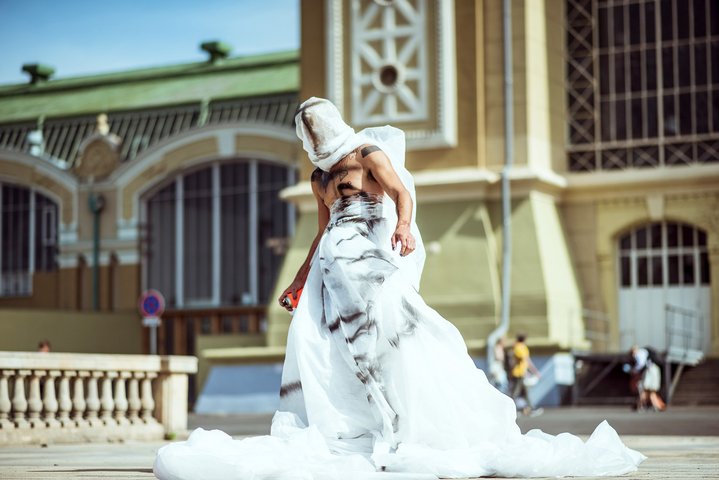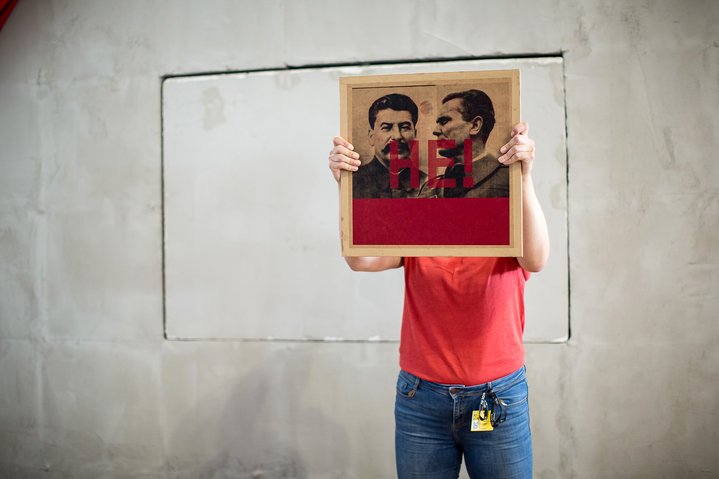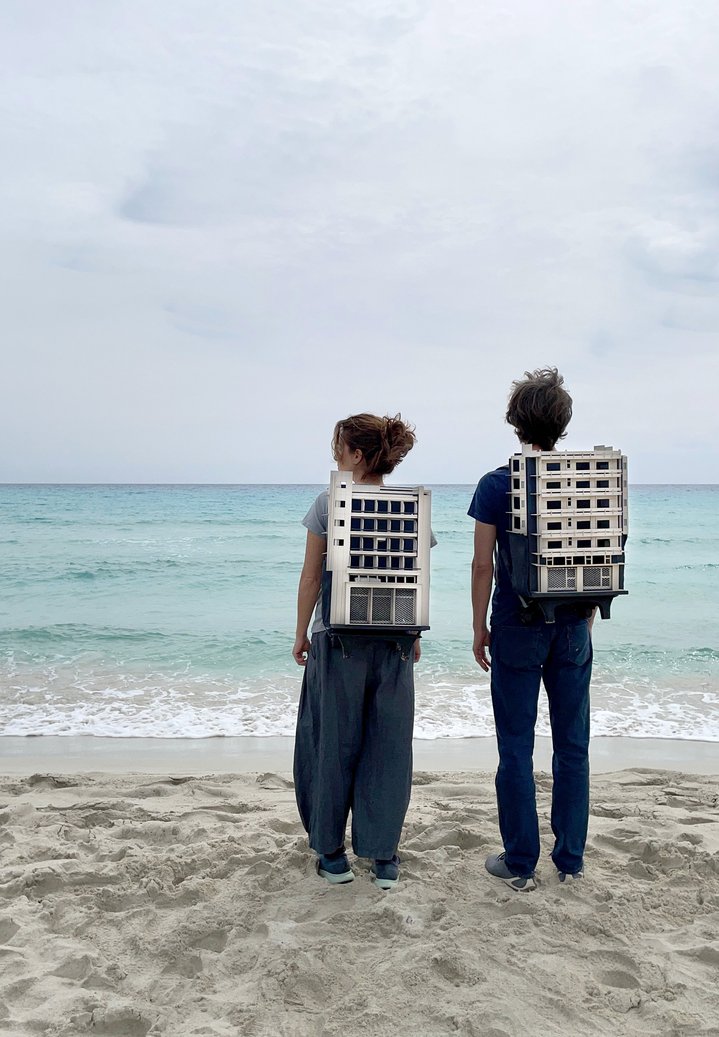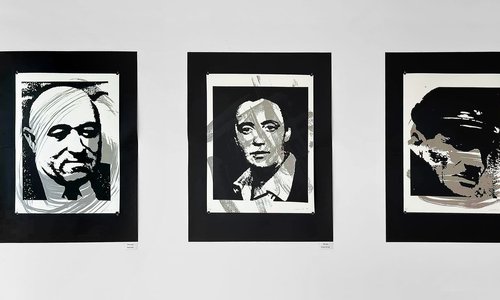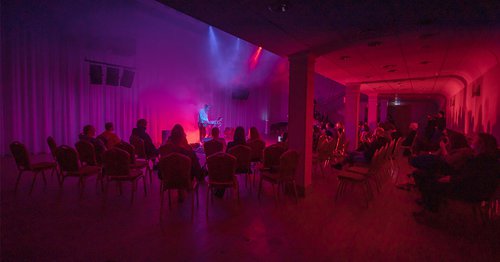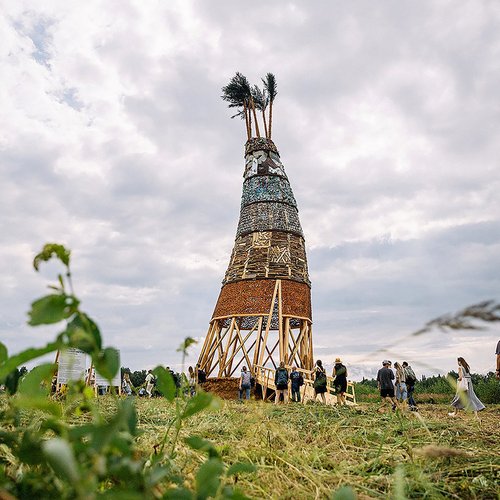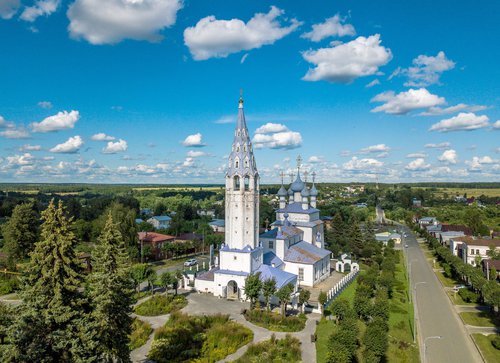Prague Quadrennial. 2019. Courtesy of Prague Quadrennial. Photo by Jan Hromadko
15th Edition of the Prague Quadrennial Sets the Stage for Our Times
The theatre arts were forced to throw in the towel during the pandemic as crowds disappeared overnight. Emerging from that crisis, the most important international show dedicated to theatre set design which takes place in Prague every four years captures the spirit of our times in powerful installations and site-specific performances.
There are two people flailing about trying desperately to build something out of wooden panels and planks. The construction metamorphoses as it continually falls apart and the creators look for new ways to reimagine it. It is a serious task, as they leap deftly around like circus acrobats. Finally, after three quarters of an hour they suddenly give up, take a bow and leave the stage. The duo, Felix Baumann and Sean Henderson, found their inspiration for this work called ‘How Things Go’, in Fischli and Weiss’s art film ‘The Way Things Go’ but here they focus on the nature of theatre, performance and scenography rather than the visual arts. The theatre arts are ephemeral, each performance is unique and sets are often destroyed once the play is over. We are invited to reflect on all this during the performance which takes place in the Trade Fair Palace a filial of the National Gallery in Prague as part of the city’s Quadrennial of Performance Design and Space. Dedicated to the most recent developments in scenography, its importance can be compared with Documenta in Kassel.
The theme of this year’s 15th Edition is summed up in one thought-provoking word: ‘Rare’. The pandemic plunged theatres all around the world into deep financial and existential crisis. This is the first edition after the pandemic and it poses a similar question to the one raised by the Venice Architecture Biennale in 2021. How will we live together? What might the world and the theatre look like in a post-pandemic future? There are two main programs featuring national booths, one showcasing countries and regions, the other dedicated to students, which set out to find an answer to this open question. Prague’s Holešovice Market serves as the main venue where throughout this week people are gathering together to exchange ideas and work out what scenography is and how it works - it is a bit like a scientific conference only for the dramatic arts.
The booths represented by Serbia and Quebec are located back-to-back and together they offer something of a summary of the status quo facing this unique creative industry. ‘Moonshine Piano’, curated by Serbian scenographer Miodrag Kuč,consists of a construction made out of scaffolding, which forms a stage with a raised platform serving as a space in which to provoke a dialogue between guest artists who are invited to take part. They exchange and tell stories, which will eventually form an archive as a starting point for the conception of new dramatic texts, political education programs and the promotion of socially engaged practices. Interaction is encouraged with the help of an item or prop called a distillate used as a kind of ice breaker to get discussion and ideas flowing. Here scenography turns into an art of bringing people into the action.
The booth representing Quebec acts as a bitter reminder that scenographers are an endangered species today. Curator, Patrice Charbonneau-Brunelle, created a fictional analogue of the WWF (World Wildlife Fund), a foundation dedicated to helping set designers: SVMMAV (The Society for the Survival and Promotion of the Living Arts Movement). On the walls of the booth are eight screens displaying interviews with eight set designers representing different areas of theatre design. They present the peculiarities of their profession and explain how they work. There are three phones at the entrance of the booth, hotlines for professionals to call for help, although background music keeps playing and no-one answers. There is a small, enclosed area close to the booth which is empty except for a bleak statement on the wall: ‘The Kuwaiti exhibit did not get the proper support necessary to participate, ‘due to a lack of understanding of the contemporary arts’, and there is the blue-yellow signature of the SVMMAV. As a profession, scenography desperately needs serious attention and investment.
One of the more popular exhibits this year is the Czech entry, an installation called ‘Limbo Hardware’ by David Možný. It consists of a white booth divided up into seven small sections each just large enough to poke your head in. Each space is different evoking typical, soulless post-soviet corridors: one is an office block, another the ground floor of an apartment building, in another there is a slot machine at the end. It is reminiscent of a Kabakovian total installation reflecting not on the old soviet life but our current state of affairs, where it seems there is not even space to fly into: there is no place left to go.
The Latvian project On Our Way. A Road Manifesto by the Grāfienes collective presents a series of screens, each documenting a different intervention which has taken place each day throughout the Quadrennial. On the opening night the group left Riga planning to arrive in Prague on the last day and during their journey the artists explore what becomes for them an ever-changing performative space which connects with the landscapes, weather, and people they encounter during the trip.
If ‘Rare’ was meant to bring about a reflection on the consequences of the pandemic on the profession as a whole, it appears that the best projects either ignored this or took a broader view questioning what scenography actually is or should be. Is it art or craft? It seems even now, scenography is still searching for its proper place within the visual arts, and its own concrete definition, and, as this edition has shown us, it is very difficult to pitch anything when you don’t know who you are or where you are going. Hopefully, there is a destination.
Prague Quadrennial of Performance Design and Space
Prague, Czech Republic
8-18 June, 2023






